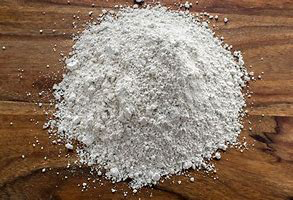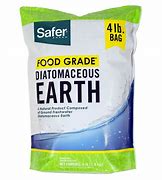Diatomaceous earth (DE) is the fossilized skeletons of microscopic single-celled aquatic organisms called diatoms. Their skeletons are made of a natural substance called silica— which makes up 26% of the Earth's crust by weight. In other words, DE is a naturally- occurring substance that is very common in the environment.
Snugs, snails, and plant-eating larvae of moths and beetles do not like to crawl over DE because the silica skeletons are very sharp—like tiny pieces of broken glass, and it causes abrasions and cuts on their skin.

DE causes pests to dry out and die by absorbing the oils and fats from their skin (or in the case of insects) from the cuticle of their exoskeleton. This drying out is accelerated by cuts and abrasions
To apply, sprinkle the powder anywhere on the soil where insects will encounter it. You may also sprinkle the powder onto the leaves and stems of plants plagued by insects. Apply a puff of diatomaceous earth directly on bugs as you see them.
DE works best in dry conditions. It clumps together and loses its effectiveness when wet, so it must be reapplied after it rains.
The downside to DE is that it does not discriminate between pests and beneficial insects. Ladybugs, green lacewings, butterflies, bees, and other "good guys" can also be killed by DE if they come into contact with it. For this reason, we recommend using DE with discretion on and around plants that beneficial insects may visit frequently.
When shopping for DE, look for the "food grade" quality. The DE used in pool filters is not effective against garden pests.

